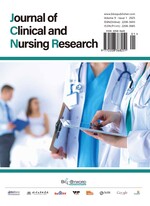Clinical Analysis of Combining Probiotics with High-Dose Dual Therapy for Helicobacter pylori Eradication
Abstract
Objective: To compare the eradication rates of Helicobacter pylori (HP) and the incidence of adverse reactions among three treatment methods. Methods: A total of 139 patients with Helicobacter pylori infection diagnosed at the outpatient clinic or during hospitalization in the Department of Gastroenterology of West Electric Group Hospital from January 2022 to April 2023 were enrolled. Patients were divided into three groups: dual therapy group (46 cases), triple therapy group (62 cases), and quadruple therapy group (31 cases). The dual therapy group received omeprazole and amoxicillin; the triple therapy group received omeprazole, amoxicillin, and probiotics; the quadruple therapy group received omeprazole, colloidal bismuth pectin capsules, amoxicillin, and furazolidone. All treatments lasted for two weeks. The eradication rates and incidence of adverse reactions were compared among the three groups. Results: The eradication rates for the dual, triple, and quadruple therapy groups were 84.8%, 85.5%, and 85%, respectively (P > 0.05). The primary adverse reactions included gastrointestinal symptoms such as bloating, abdominal pain, loss of appetite, and abdominal discomfort, with incidence rates of 1, 2, and 6 cases in the dual, triple, and quadruple therapy groups, respectively (P = 0.574). However, a significant difference was found between the dual and quadruple therapy groups (P = 0.03) and between the triple and quadruple therapy groups (P = 0.026). Neurological side effects, such as dizziness and headache, were rare, with incidences of 0, 1, and 1 cases in the dual, triple, and quadruple therapy groups, respectively (P = 0.611). Conclusion: The efficacy of dual, triple, and quadruple therapy for eradicating Helicobacter pylori showed no significant difference. However, the dual and triple therapy groups had lower adverse reaction rates, making them suitable alternatives to traditional quadruple therapy for reducing patient discomfort. The probiotic group also contributed to the restoration of normal gastrointestinal microbiota.
References
Helicobacter pylori is Listed as a Definite Carcinogen, n.d., 2022. Science 24 Hours, 2022(4): 35.
Chinese Medical Association Gastroenterology Branch Helicobacter pylori Study Group, 2022, The Sixth National Consensus Report on the Management of Helicobacter pylori Infection (Non-Eradication Therapy Section). Chinese Journal of Digestion, 42(5): 289–303.
Chen W, Shen Y, Zhang Y, 2022, Meta-Analysis of a Randomized Controlled Trial of High-Dose Dual Therapy for Helicobacter pylori. Modern Medicine, 50(2): 192–200.
Zhao H, Zhong W, Liang J, et al., 2015, Observation on the Efficacy of Probiotics-Assisted Triple Therapy in Eradicating Helicobacter pylori. Guangxi Medical Journal, 37(1): 105–106.
Pinchuk IV, Bressollier P, Verneuil B, et al., 2001, In Vitro Anti-Helicobacter pylori Activity of the Probiotic Strain Bacillus subtilis 3 is Due to Secretion of Antibiotics. Antimicrob Agents Chemother, 45(11): 3156–3161. https://doi.org/10.1128/AAC.45.11.3156-3161.2001
Zhang N, 2021, Efficacy and Safety Analysis of Bifidobacterium Lactobacillus Triple Viable Bacteria Combined with Quadruple Therapy in the Treatment of Helicobacter pylori Infection. Clinical Research, 29(9): 56–57.
Feng Y, Chen Z, Yang X, 2021, The Effect of Probiotic Adjuvant Therapy on Inflammatory Factors in Patients with Helicobacter pylori-related Chronic Gastritis. Contemporary Medicine, 27(11): 125–127.


